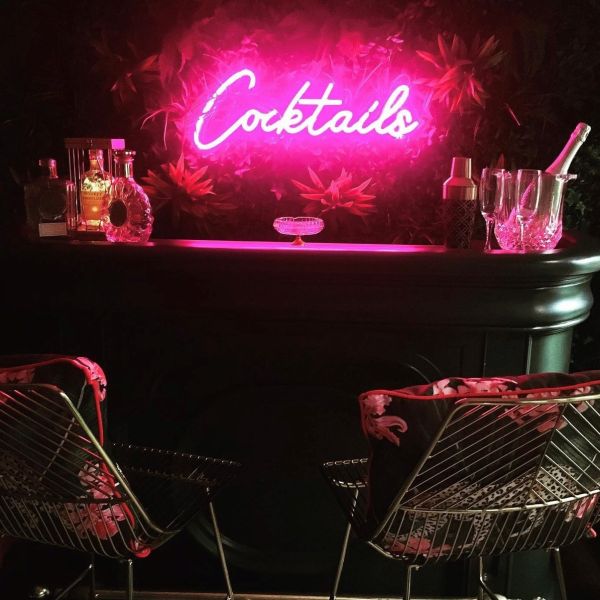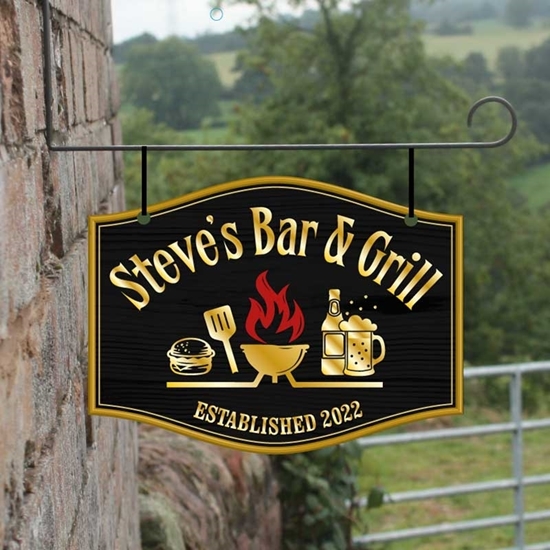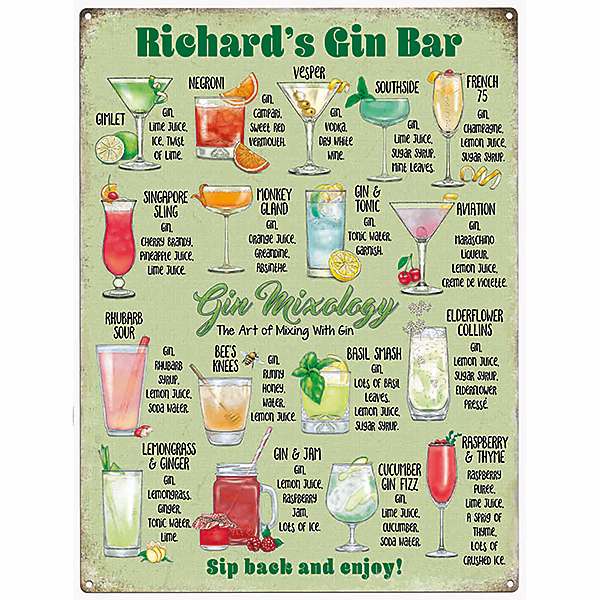Best Facts To Picking Personalised Pub Signs
Wiki Article
What Material Is Used For Signs On Bars?
Bar signs vary significantly in terms of material they are made of, each having distinct advantages and attributes that work for different designs and purposes. Below is a brief overview of materials commonly used to create bar signage, and their differences: Wood
Characteristics: Natural, rustic, warm.
Durability : Most durable, but susceptible to damage from moisture and.
Uses: Ideal for vintage or rustic-themed bars, name boards, menu boards and personalized signs.
Customization: May be stained, carved, or painted. It is easily customizable using a variety of finishes.
2. Metal
Characteristics: Sleek, modern, industrial.
Durability: Highly durable and weather-resistant, suitable for both indoor and outdoor use.
Uses: Ideal for bars with a modern or industrial theme signage for branding, bar signs, and durable informational signs.
Customization Laser-cutting, embossing or painting are all possibilities. Most often, it is used to create intricate logos and designs.
3. Neon
Characteristics: Bright, eye-catching, retro.
Durability The material is brittle when compared to other materials, but it will last for years with proper maintenance.
It is used to create attractive and eye-catching signs, or branding.
Customization is limited due to the nature, and limitations of neon tubing. Available in various colors.
4. This is a great method to obtain acrylic
Characteristics: Versatile, lightweight, modern.
Durability: This fabric is resistant to fade.
Uses: Great for creating modern, sleek signage that is illuminated, with detailed logos.
Customizations: The product may be printed or laser-cut. It can also be placed on top of each other to create a 3D look. Available in a variety of colours and finishes.
5. Vinyl
Features: Flexible and easy to apply.
Durability: Ideal for temporary or semi-permanent applications. Vinyl of high quality can be used outdoors.
Uses: Great to use for window graphics, promotions that are temporary and custom decals.
Customization is available in a broad variety of designs, colors and sizes. Easy to install and remove.
6. Chalkboard
Characteristics: Functional, rustic, interactive.
Durability It requires regular maintenance (cleaning and chalk replacement). Not properly maintained the chalk could be damaged.
Uses: Great for menu boards, daily specials and interactive signs where the information is frequently updated.
Customization: Handwritten messages and designs are also possible. Frames can be made of various materials to increase strength and beauty.
7. Glass
Characteristics: Elegant, sleek, modern.
Durability - Fragile, but can become durable when tempered. Sometimes, it is used in combination with backlighting to create a more dramatic impact.
Uses: Can be used for illuminated signs or window signs.
Customizations: They can be printed, painted, or etched. Often employed in conjunction with lighting to create a striking effect.
8. PVC
Characteristics: Lightweight, versatile, cost-effective.
Durability: Weather-resistant and tough this product is suitable for indoor and outdoor use.
Uses: For event promotions, temporary signage and lightweight branding signs.
Customization can include cutting shapes, printing, and painting. Available in several different thicknesses.
9. Below are some of the ways to LED
Characteristics: Energy-efficient, bright, modern.
Durability: The product is designed to be durable and durable, allowing continuous usage.
Perfect for creating vibrant lighting effects and illuminated signs.
Customization: Available in a wide range of colors. It can also be programmed to change messages or animations.
10. Foam Board
Characteristics include: light weight, low cost and easy to carry.
Durability: less durable and ideal for use in temporary indoor environments.
Ideal for temporary events, promotions, and informational signage.
Customization - Printing or applied with vinyl. Easy to cut into various shapes and sizes.
The material's properties affect the appearance of bar signs durability, as well as suitability for various types of environments and usages. The best material for your sign depends on its intended purpose the aesthetics of the sign, as well as budget constraints. See the recommended look what I found for bar sign outdoor for more examples including hanging home bar signs, make a bar sign, personalised garden pub sign, personalised sign for bar, personalised metal pub signs, cocktail bar sign, outdoor home bar signs, the staying inn pub sign, personalised cocktail sign, the staying inn pub sign and more.

How Are Bar Signs Different In Light?
Lighting can have a major influence on bar signage, in terms of their impact on visibility, overall and the ambiance. Here are a few ways in which the lighting of bar signs can be affected: Neon signs
Characteristics: Bright, colorful, classic.
Lighting: Uses fluorescent gas-filled tube that emits light when charged by electricity.
Uses: Perfect for creating a vintage or retro look. Typically, it is employed for logos, bar names, and striking designs.
Benefits: It's noticeable even from an extended distance. It also is nostalgic.
Inconveniences: The product is fragile and repairs can be costly.
2. LED Signs
Characteristics: Energy-efficient, versatile, modern.
Lighting: Utilizes diodes that emit light to create brilliant light.
It can be used for outdoor and indoor signs, lighting effects that can be programmed and interactive displays.
Benefits include being long-lasting, energy-efficient. Animations as well as color changes can be programmed.
Negatives: Could be expensive initially, but it can also save on energy and maintainance costs.
3. Signs with Backlights
Characteristics: Elegant, sophisticated, subtle.
Lighting: Put bulbs, fluorescent lights, or LEDs halogen lamps in a translucent material to create a soft glow.
Applications: Typically utilized in modern menu boards, bar signs and branding elements.
Benefits: Improves the readability of smaller print in dim light conditions.
Advantages: Easy installation, but a higher initial cost.
4. Signs with Edge-Lit
Characteristics: Sleek, contemporary, stylish.
Lighting: Illuminates the edges of a sign panel, usually acrylic, with LEDs.
Uses: Great for contemporary minimalist designs. Commonly used as informational or directional signs.
Features: Creates sophisticated unique looks. It's also energy efficient.
Certain design styles cannot be restricted.
5. Ambient/Accent Lighting
Characteristics: Subtle, atmospheric, decorative.
Lighting: Uses indirect lighting sources to emphasize or highlight indications.
Uses Enhances the atmosphere. Most often, it is used to emphasize artwork or theme décor.
Benefits: Creates a cosy and warm atmosphere.
The direct illumination provided may not be enough to allow for easy reading.
6. Marquee Signs
Characteristics: Bold, theatrical, eye-catching.
Lighting Multiple LEDs or light bulbs are utilized around the sign's edges.
Uses : Popular for creating old-fashioned film designs and exterior signage.
The design is highly visible and attracts people's attention.
Disadvantages : Costly and require regular maintenance.
7. Projection Signs
Characteristics: Dynamic, innovative, versatile.
Lighting: Uses projectors to project light and images onto the surface.
Uses: Great for temporary promotions, events, and dynamic displays.
Advantages: No need to construct an actual sign structure.
Negatives
8. Fluorescent Signs
Characteristics: Bright, cost-effective, traditional.
Lighting: Make use of fluorescent tubes to give light.
Applications: Typically employed on large indoor and exterior signs.
Benefits: Bright, efficient and affordable for large-scale signs.
Disadvantages Less energy-efficient LEDs. Some LEDs be more harsh in their light.
Lighting Factors to Consider
Visibility
Neon LEDs and neon signs can be extremely effective in grabbing people's attention, particularly in dim lighting conditions.
Backlit or edge-lit Signs can be great to improve readability and for creating an attractive and professional look.
Energy Efficiency
LED signs: Energy-efficient and durable.
Neon and Fluorescent Signs are less energy efficient, with neon being more fragile.
Aesthetic Appeal
Neon and marquee signs: perfect for retro and vintage aesthetics.
The perfect choice for clean and modern designs is edge-lit signage with backlighting.
Ambient lighting can enhance the overall atmosphere.
Maintenance
LED signs are low-maintenance and last for a long time.
Fluorescent and neon signs: Require frequent maintenance as well as potential repairs.
Cost
Signs with backlit or LED lights Costs of initial investment, but lower operational costs.
Fluorescent Signs are cheaper initially however they are more costly in terms of energy consumption over time.
Flexibility
Projection and Programmable Signs High flexibility in changing displays and dynamic content.
Traditional Signs are less flexible However, they often provide an desired appearance.
When choosing the appropriate kind of lighting and color Bar owners will be able to increase the visibility of their establishment and create a desired atmosphere, as well as effectively promote their brand and promotional messages. Have a look at the recommended weblink about home pub signs for website tips including personalised garden bar signs, the staying inn sign, a bar sign, a bar sign, personalised hanging bar sign, pub signs personalised, bar hanging sign, make your own bar sign, the staying inn bar sign, personalised pub signs for garden and more.

What Is The Difference Between Bar Signs In Regulations And Other Bar Signs?
Bar signs are subjected by different regulations that are imposed by the local, state and federal authorities to ensure safety for the public, aesthetic standards, as well as adherence to zoning rules. Here's how bar signs differ from the regulations: 1. Size and Placement Regulations
Zoning law: It is a set of rules which determines where signs are allowed to be placed, their height, size and distances from the property line and road, as well as other structures.
Historical Districts: Restrictions may apply to preserve the historical characteristics of specific areas restricting the size, design and the materials used in signs.
2. Illumination Restrictions
Light Pollution: To try to minimize light pollution it's possible to reduce the brightness, the color, and the time of the illuminated signs.
Safety: Signs must not create glare or other light sources that can cause danger to drivers or pedestrians. This is especially true near roads.
3. Signage Content
Alcohol Advertising - Some jurisdictions have restrictions regarding alcohol advertising. These include the prohibition of certain images or content that entices minors or encourages excessive drinking.
Health Warnings: Some laws might require that signage display warnings regarding the dangers of drinking alcohol or smoking cigarettes.
4. Historic Preservation Regulations
Architectural Compatibility. Signs in historic districts should be in line with the architectural design and the character of the area. In most cases preservation boards or committees are required to approve signs.
Materials and Design Limitations may apply to the material as well as design and color schemes of signs in order to preserve the integrity of the past.
5. Sign Permitting Process
Permit Requirements Owners of bars need to get permits before they are able to install or alter signs. This can require paying costs, making submissions and getting approval from local authorities.
Code Compliance: In order to ensure public security and accessibility, signs must adhere to building codes, safety regulations, and accessibility standards.
6. Sign Maintenance and Removal
Maintenance requirements: It's the bar's responsibility to ensure that their signs are in good shape. This includes making sure they're safe, structurally sound and in compliance with all rules and regulations.
Signs that are abandoned or damaged To prevent pollution and preserve the beauty of an area, there may be rules that govern the removal of signs which are abandoned or disused.
7. Digital Signage Regulations
Content Restrictions. The law may limit what images can be displayed on digital signage. For instance they may prohibit flashing lights or offensive images.
Digital Signage Operating Limits - Regulations could limit brightness, motion or frequency of changes for digital signs to minimize visual clutter and distracting distractions.
8. Penalties and Enforcement
Inspections are conducted by local authorities to check whether signage laws are in compliance. Violations will be cited.
Penalties. For non-compliance there may be citations, fines, orders to modify or take down signs, or other legal actions.
9. Signing Variance Process
Bar owners may request an exemption to permit them to break from the standard regulations for signage. The bar owner must justify their request and show that it will not have any negative impact on public safety.
Public Input: Certain issues may require public hearings or input from residents neighbors, property owners who own adjacent properties, or business associations.
10. Community Input and Engagement
Public Consultation Some jurisdictions ask community members to help develop regulations. This can be done through public meetings, surveys or stakeholder consultative processes.
Sign regulations could have community Benefits. Sign regulations may contain provisions that improve the appearance of signs, encourage local business, or help to revitalize communities.
Bar owners who are aware of and comply with signage regulations will ensure that their signage appeal to their customers, contributing positively to their community and meeting the legal requirements. This can reduce the chance of legal disputes, fines or penalties. Have a look at the top rated bar sign hanging for site recommendations including pub bar signs for sale, modern pub sign, hanging home bar signs, bar signs for garden, bar sign hanging, pub sign design ideas, personalised pub signs, pub wall sign, outdoor home bar signs, home made bar sign and more.
